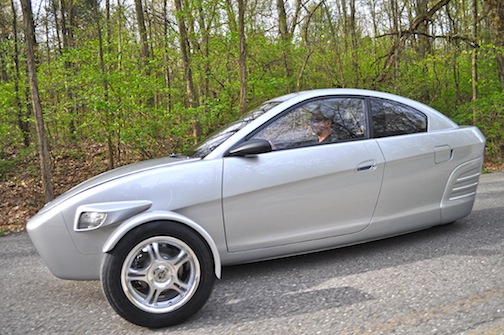The Early Death of the 3-Wheeled Car?
Posted on Dec 23, 2022 in Safety | 3 comments

Starting a car company is probably one of the most difficult of all business ventures. Even the best ideas can fail due to a lack of funds or stifling government regulatory requirements.
And yet, people still try.
The people who start car companies do so because they believe they can change, or improve upon, the current state of automobile design, functionality, and performance. Starting a car company can cost hundreds of millions of dollars, though, and most who try eventually fall short of their goals because they simply run out of money.
One company, Elio Motors, wants to introduce an 84-mpg 2-seater that costs just $6,800 and is powered by a 3-cylinder gas engine. Sounds great, right?
Consider this: The Elio has only three wheels, meaning the company is trying to classify the car as a motorcycle to avoid the stricter safety and efficiency regulations that govern cars.
The government, though, has other plans, which could send Elio into the history books.
Three-wheeled cars haven’t been accepted into mainstream America, so there aren’t many on the streets. To head off potential safety problems, the NHTSA wants to make sure that vehicles that are overly similar to passenger cars would have to be classified as such. That would include 3-wheelers with features such as,
fully-enclosed cabins, hinged doors with roll-up windows, steering wheels, and side-by-side seating.
That makes sense. People would assume that a car like the Elio would have the same safety features as other cars because of its familiar setup. Classifying it as a motorcycle, though, leaves room for safety shortcuts, an easy way to bypass the NHTSA.
Another 3-wheeler that’s getting some attention is the Polaris Slingshot, an insane mash-up of a vehicle that is truly a combination of car and motorcycle. It has no roof, no doors, and an optional windscreen, but it also has a steering wheel, a transmission (with reverse), and bucket seats. I’m sure it’s a blast to drive, but Car and Driver eloquently points out one of the drawbacks of a rear-drive vehicle with a single rear wheel:
The wide forward footprint means that the front end is stable, but the Slingshot doesn’t have a car’s commitment to a straight path. The rear end is a puppy, following along wherever you go, but also stopping now and then to sniff the shrubbery. Even with stability control activated, you can get a wiggle from the tail on a strong 1-2 shift.
The Slingshot isn’t a motorcycle trying to be a car, it’s a motorcycle that has some car-like features. The NHTSA’s new regulations shouldn’t harm the Slingshot but could completely disarm the Elio.
One of the most famous cars that lacks a fourth wheel is the Morgan 3-Wheeler. Like the Slingshot, it’s an open top brute that’s anything but a polished and poised driver. That’s the point, though. The Morgan is an expensive toy to bring out on sunny days; it’s not meant to be a daily commuter vehicle like the Elio.
We hope Elio Motors can acquire the funds it needs and can work with the NHTSA to meet regulations. Sometimes it’s the small companies that rise up to make the biggest impact, and we’re rooting for the ones who at least try.





.gif)


Get the Government out of peoples business. All vehicles manufactured for use on the highways & byways have issues. The buyer/ user is the key as to whether the vehicle is appropriate for their needs. Good drivers= safety, Crappy drivers= unsafety.:)
What about the crappy driver in the large pickup who T-bones the good driver in the Elio? I’d want that Elio to have all the side protection possible, and government regulations might be the only way to make that happen on 3-wheeled cars.
Hence, NHTSA is initiating a new NCAP program in which (I quote) “new tests to assess how well vehicles protect pedestrians from head, leg and pelvic injuries that occur when a pedestrian is struck by a vehicle”. Doesn’t sit well with the exposed front wheels and fenders… at least regarding the legs. Of course there’s a way around all this…